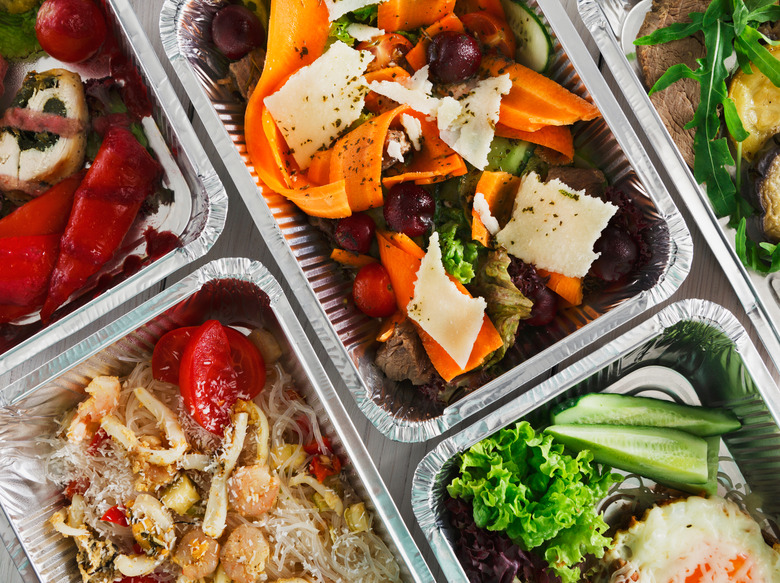Food Technology Project Topics
Food technology is the area of food science in which food scientists analyze and make improvements to food preparation, cooking methods, preservation and packaging. Food scientists make these improvements through advancements in scientific methods and research. Analysis, especially the analysis of the chemical composition of food, also plays an important role in developing new food technologies. For a food technology project, you can choose an idea in one of these areas, or choose to analyze the chemical content of a food.
Packaging
Packaging
Packaging is an important topic in the food industry. The food industry uses different types of packaging for different purposes. For a food technology project regarding packaging, you could show how various packaging materials produce diverse effects on the food contained within them. One example for this type of project is to wrap a food item whose process of spoiling is easily seen, like a sliced apple, in diverse types of packaging material. Wrap apple slices in various packaging materials, including cellophane, plastic bags, foil and paper, and place them in the fridge; monitor the slices' decomposition progress to report on which types of wrapping preserve the apple slices best.
Cooking Processes
Cooking Processes
Food scientists are interested in how to cook foods of diverse types, shapes and sizes. They are also interested in the mathematical relationships between cooking times, temperatures and the foods cooked. Some may assume this type of research is similar to creating new recipes, but the true intent of a scientist analyzing cooking processes is much like the intent of a chemist investigating the boiling and freezing temperatures of different chemicals – to create a knowledge base for the basic units of the science. A project studying the cooking process should incorporate these variables of interest. For example, you can determine how the thickness of chicken breast affects cooking time. Purchase chicken breasts of various thicknesses, insert cooking thermometers into their middles and then cook them. Measure how long it takes for each piece of chicken to reach 170 degrees Fahrenheit. Relate the cooking time to the thickness of the chicken breast in your report.
Preservation
Preservation
Although packaging is an important part of food preservation, people have been preserving food for centuries without modern-day packaging devices like zipper-lock bags and foil. Instead, the most important aspect of food preservation are the ingredients used in food itself. As food scientists are interested in what types of ingredients help preserve food, you can take this angle for your project. As an ingredient project, analyze specific ingredients' effects on bacteria growth. Put different types of foods, like garlic or onions, in a petri dish with a small amount of bacteria. Monitor the bacteria's growth over the span of a few days to determine which ingredients fight bacterial growth best.
Food Analysis
Food Analysis
Food technology is also about analyzing foods so that food scientists can determine what types of technology will best benefit specific foods. If you wish to perform a food analysis project, first select a food item and the ingredient or chemical contained with it that you are interested in researching. A simple example of food analysis involves determining the water content of fruit. Gather together different fruits, weigh them, slice them, dry them and then reweigh them. The difference between the first and second weights is the fruit's water weight.
Cite This Article
MLA
Verial, Damon. "Food Technology Project Topics" sciencing.com, https://www.sciencing.com/food-technology-project-topics-8062250/. 13 March 2018.
APA
Verial, Damon. (2018, March 13). Food Technology Project Topics. sciencing.com. Retrieved from https://www.sciencing.com/food-technology-project-topics-8062250/
Chicago
Verial, Damon. Food Technology Project Topics last modified March 24, 2022. https://www.sciencing.com/food-technology-project-topics-8062250/
